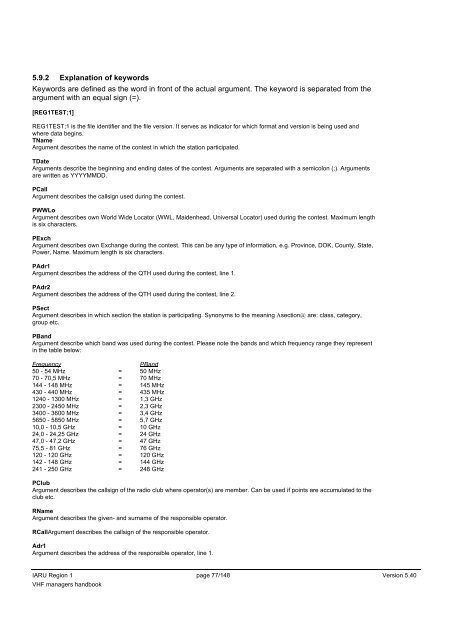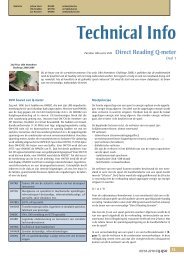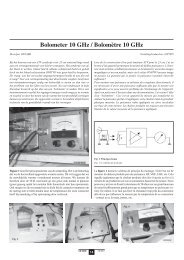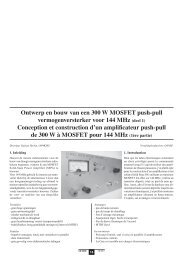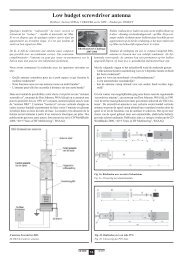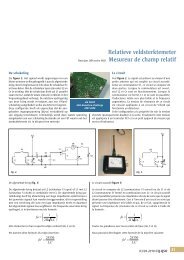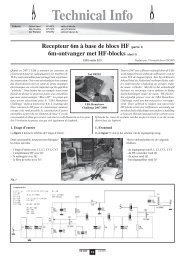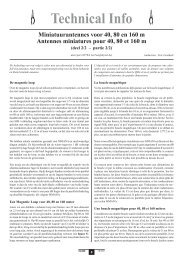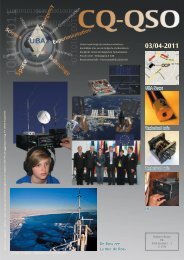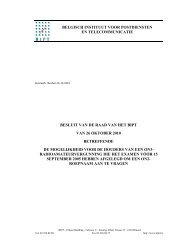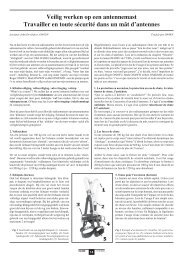IARU Region 1 VHF Managers Handbook - UBA
IARU Region 1 VHF Managers Handbook - UBA
IARU Region 1 VHF Managers Handbook - UBA
You also want an ePaper? Increase the reach of your titles
YUMPU automatically turns print PDFs into web optimized ePapers that Google loves.
5.9.2 Explanation of keywords<br />
Keywords are defined as the word in front of the actual argument. The keyword is separated from the<br />
argument with an equal sign (=).<br />
[REG1TEST;1]<br />
REG1TEST;1 is the file identifier and the file version. It serves as indicator for which format and version is being used and<br />
where data begins.<br />
TName<br />
Argument describes the name of the contest in which the station participated.<br />
TDate<br />
Arguments describe the beginning and ending dates of the contest. Arguments are separated with a semicolon (;). Arguments<br />
are written as YYYYMMDD.<br />
PCall<br />
Argument describes the callsign used during the contest.<br />
PWWLo<br />
Argument describes own World Wide Locator (WWL, Maidenhead, Universal Locator) used during the contest. Maximum length<br />
is six characters.<br />
PExch<br />
Argument describes own Exchange during the contest. This can be any type of information, e.g. Province, DOK, County, State,<br />
Power, Name. Maximum length is six characters.<br />
PAdr1<br />
Argument describes the address of the QTH used during the contest, line 1.<br />
PAdr2<br />
Argument describes the address of the QTH used during the contest, line 2.<br />
PSect<br />
Argument describes in which section the station is participating. Synonyms to the meaning Asection@ are: class, category,<br />
group etc.<br />
PBand<br />
Argument describe which band was used during the contest. Please note the bands and which frequency range they represent<br />
in the table below:<br />
Frequency PBand<br />
50 - 54 MHz = 50 MHz<br />
70 - 70,5 MHz = 70 MHz<br />
144 - 148 MHz = 145 MHz<br />
430 - 440 MHz = 435 MHz<br />
1240 - 1300 MHz = 1,3 GHz<br />
2300 - 2450 MHz = 2,3 GHz<br />
3400 - 3600 MHz = 3,4 GHz<br />
5650 - 5850 MHz = 5,7 GHz<br />
10,0 - 10,5 GHz = 10 GHz<br />
24,0 - 24,25 GHz = 24 GHz<br />
47,0 - 47,2 GHz = 47 GHz<br />
75,5 - 81 GHz = 76 GHz<br />
120 - 120 GHz = 120 GHz<br />
142 - 148 GHz = 144 GHz<br />
241 - 250 GHz = 248 GHz<br />
PClub<br />
Argument describes the callsign of the radio club where operator(s) are member. Can be used if points are accumulated to the<br />
club etc.<br />
RName<br />
Argument describes the given- and surname of the responsible operator.<br />
RCallArgument describes the callsign of the responsible operator.<br />
Adr1<br />
Argument describes the address of the responsible operator, line 1.<br />
<strong>IARU</strong> <strong>Region</strong> 1 page 77/148 Version 5.40<br />
<strong>VHF</strong> managers handbook


